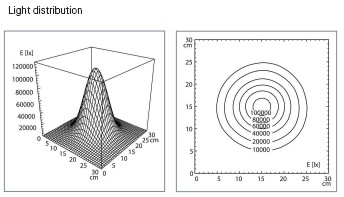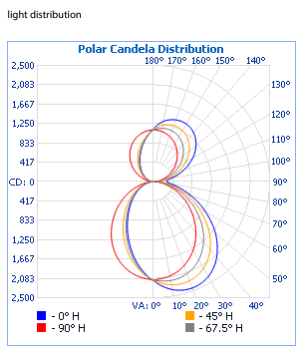
Welcome to Waldmann Lighting’s four-part series on how to evaluate clinical lighting.
Clinical lighting is an invaluable instrument for medical professionals as it assists in precise examinations and improved patient care. Quality lighting also plays an important role in eliminating eye strain, fatigue, and discomfort, affecting productivity and general well-being for practitioners. To assist you in selecting the best exam and procedure light for your hospital or clinic, we have identified and prioritized four factors to understand that are essential when choosing a medical light fixture:
Let’s get started!
There are two common types of illumination measurements — 𝘭𝘶𝘮𝘦𝘯𝘴 and 𝘭𝘶𝘹 — that will assist you in selecting an appropriate lighting fixture. Lumens measure the total amount of light created by the light source. Lux is a measure of the amount of light delivered to a specific area. You will usually find lux measurements on spec sheets that look like this:
Product spec sheet: TRIANGO 100-3 C D16073000
This means at a distance of 100 cm (39.37 inches) the light at the surface is 100000 lx.
As shown in these tables on the spec sheet, you can see the distribution of light at the surface. In a 30 cm x 30 cm square surface space from a distance of 1 meter, the max lux level is 100,000 lx.

Lux is probably the most significant measurement in lighting technology for clinical lighting, identifying the intensity of light at a specific distance to a surface. For reference, the illuminance of daylight during a clear, sunny day is 100,000 lux. Typically, medical examination lights offer 30,000 – 60,000 lux at 0.5 meter and minor procedure lights attain 60,000 -100,000 lux at 1 meter. Although brightness is the central consideration when selecting an exam or minor procedure light, additional functions such as dimming, LED quality and other features should also be considered. (More to come in Part 4)
So, taking this a step further, why aren’t lumen measurements best to consider when buying clinical lighting? Good question! Lumens measure the total amount of visible light emitted by a source, regardless of the area it illuminates. Clinical exam lighting is 99.9% focusing light at a surface area rather than illuminating a clinical space like an entire exam room. When creating lighting for a room, then lumen measurements are important because now the tables can include up light and downlight and the purpose of the lighting is different.
Below is spec sheet information for a patient room light and you see the different tables and data measurements.
Product spec sheet: AMADEA 2.0 BED AMA330000-00

So, some final thoughts to share. If you are considering a clinical light, the focus should be on correct lux output, making sure you have the correct level of light at the surface for your specific needs.
If this might seem overwhelming, I’ve got great news for you. You don’t need to be an expert in lighting. Because you have a team of lighting experts at Waldmann lighting who are more than happy to work with you to find the ideal light for your application.
Feel free to contact Waldmann Lighting at waldmann@waldmannlighting.com if you have any questions. And please explore our portfolio of medical lighting solutions at https://waldmannlighting.com/medical/products/.
Reference: IEC 60601-2-41